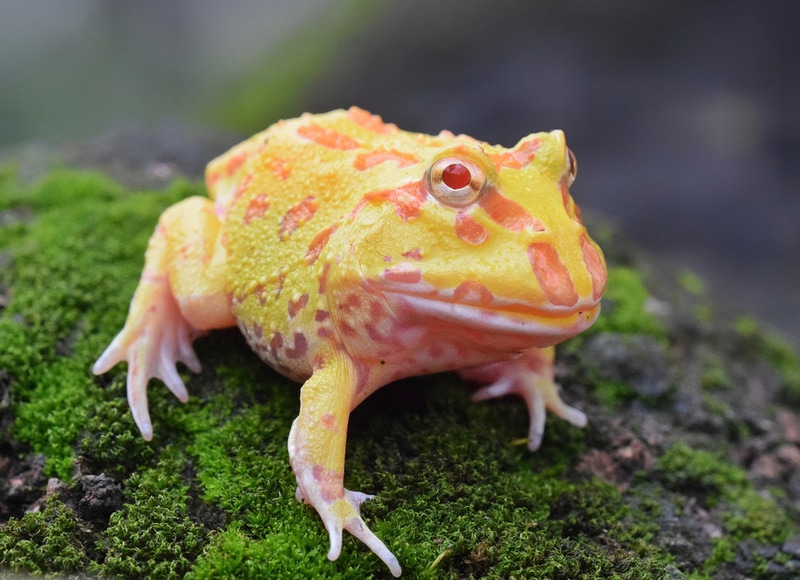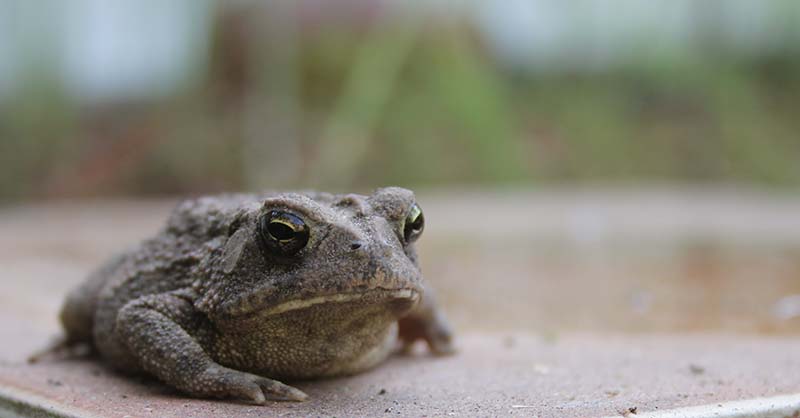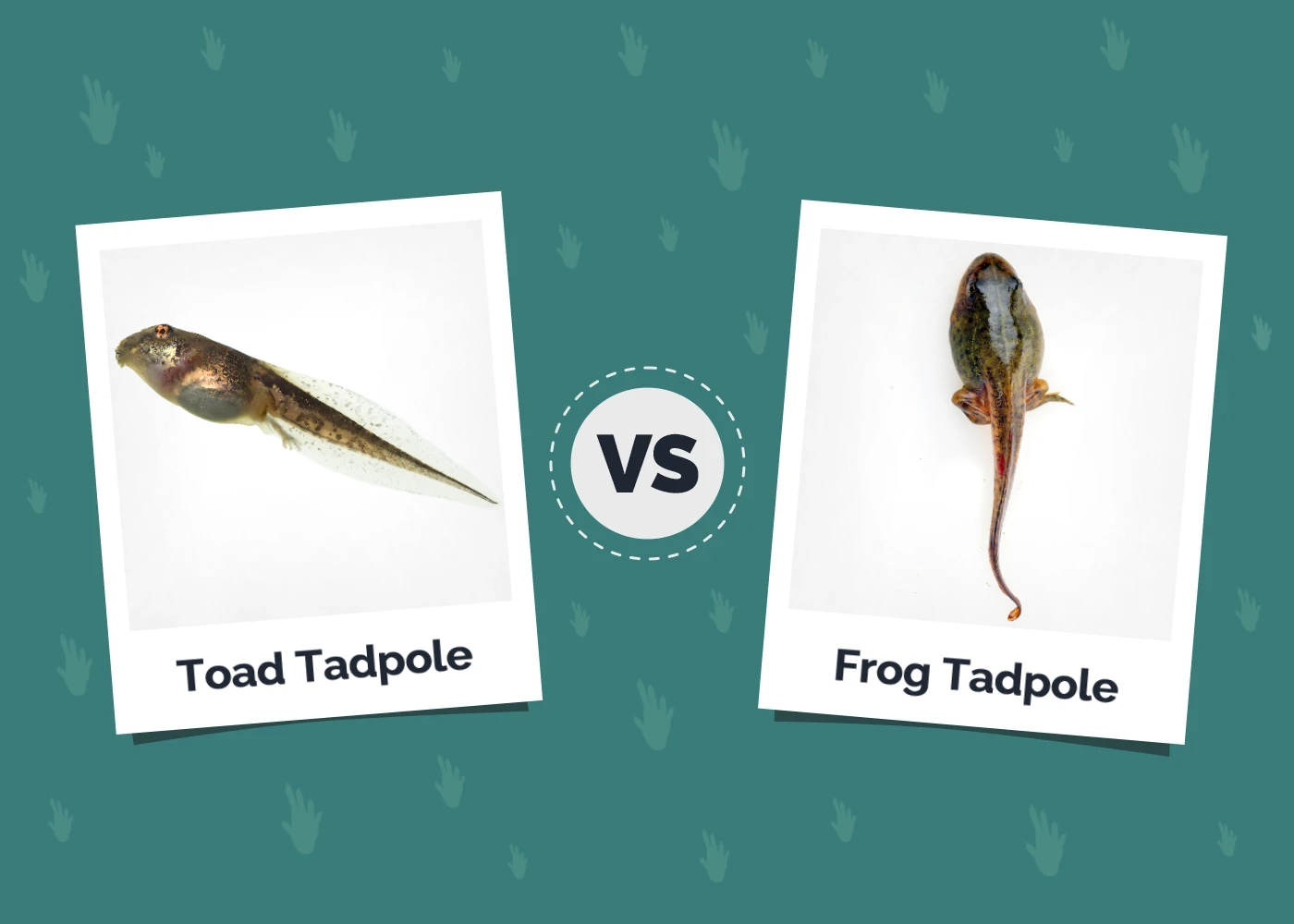Amazon Milk Frog: Lifespan, Diet, Pictures & More
Updated on
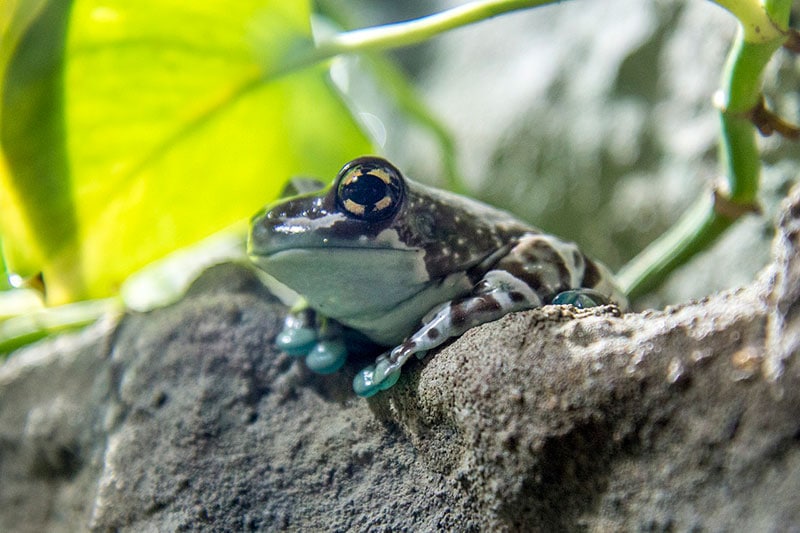
The Amazon Milk Frog (Trachycephalus resinifictrix) or Mission Golden-Eyed Tree Frog is an arboreal amphibian native to the tropical rainforests of South America. It often stays in the canopy and rarely goes down to the ground. It gets its name from the poisonous substance it secretes to deter predators. They are commonly found in zoos and in homes where they’re kept as pets.
| Size: | Up to 5 inches long |
| Lifespan: | 5–10 years |
| Color: | Dark brown, gray, khaki green |
| Suitable for: | Experienced pet owners |
| Temperament: | Highly vocal |
| Diet: | Crickets, worms, invertebrates, and insects |
| Tank Set-Up: | Large tank with safe substrate, branches, and hiding places |
| Minimum Tank Size: | 29 gallons |
| Suitable Tank Mates: | Similarly sized cohorts |
The International Union for Conservation of Nature and Natural Resources (IUCN) lists the Amazon Milk Frog as a species of least concern, although its population size is unknown1. Its main conservation threats are agriculture, logging, and human encroachment. Its arboreal lifestyle undoubtedly is a factor in keeping the species secure in the wild.
Amazon Milk Frog Breed Characteristics
Amazon Milk Frog Overview

The Amazon Milk Frog is relatively easy to care for as long as you set up an aquarium with conditions that replicate its native habitat. The animal’s vocal nature and nocturnal activity levels are worth noting when deciding where to house your pet. Regular cleaning of its tank is also imperative, given the high temperatures and humidity the amphibian needs.
While the frog is secure in the wild, scientists don’t know a lot about its natural history in the South American rainforests. It’s complicated by how impenetrable these habitats are and the animal’s life in the forest canopy. Fortunately, the Amazon Milk Frog adapts well to life as a pet and even thrives with the right conditions.
Amazon Milk Frog Cost
The Amazon Milk Frog is a popular choice among hobbyists. They readily breed in captivity, ensuring an available supply most times. Most are sold young and unsexed. Some sellers have breeding stock, which keeps the price reasonable. We strongly urge you to buy only from businesses that have a live-arrival guarantee. You can expect to pay between $60–$130 for a frog, plus shipping.
Care Guide & Tank Set Up
Tank Size
You should get at least a 29-gallon tank to house your Amazon Milk Frog. However, the larger, the better. These frogs do well in small groups. While they aren’t as active as some pets, they need space to move.
Remember that you must add decor and a water bowl inside the aquarium, which will also take up room. Your frogs probably won’t be on the bottom much. Instead, perches will be necessary.
Substrate
You shouldn’t use sand or gravel as a substrate for Amazon Milk Frogs. It must be something safe in case they ingest the material. We suggest using coconut fiber, sphagnum moss, or even moist paper towels. They will help maintain the humidity at the right level.
Remember that this species is relatively large, making for frequent cleaning and replacement of the substrate.
Humidity
Maintaining humidity levels between 50–70% is ideal for replicating the frog’s rainforest habitat. You can even take it a bit higher to 80%. Daily misting will ensure it stays within a healthy range. Having a screen cover on your tank will allow for air circulation to keep the conditions healthy. These amphibians can tolerate fluctuations in the percentage, as long as it stays above 50%.
Lighting
We recommend adding UVB lighting to your frog’s aquarium. It’ll benefit the animal and give your setup a more pleasing look. Remember that these frogs are nocturnal and generally spend their days hidden and asleep. However, installing a light is wise if you want to put live plants in the tank. Of course, you also want to see your pet once in a while.

Heating
You can set up your tank with two temperature zones using an incandescent light bulb. One side can remain 80–85℉ and the other 70–75℉. Alternatively, you can use a timer or thermostat to create a diurnal temperature shift to mimic the conditions in the wild. Amphibians are ectotherms or cold-blooded animals, so the tank temperature should never go below 70℉.
Things to Know When Owning an Amazon Milk Frog:
Food & Diet Requirements
Amazon Milk Frogs eat a variety of foods in the wild. You can feed your pet live crickets as a staple diet. We suggest mixing it up once in a while with mealworms, earthworms, or wax worms. You can also give your frog pinkie mice if they’ll take them. Using a powdered vitamin and mineral supplement on their food will ensure your pet is getting a complete and balanced diet.
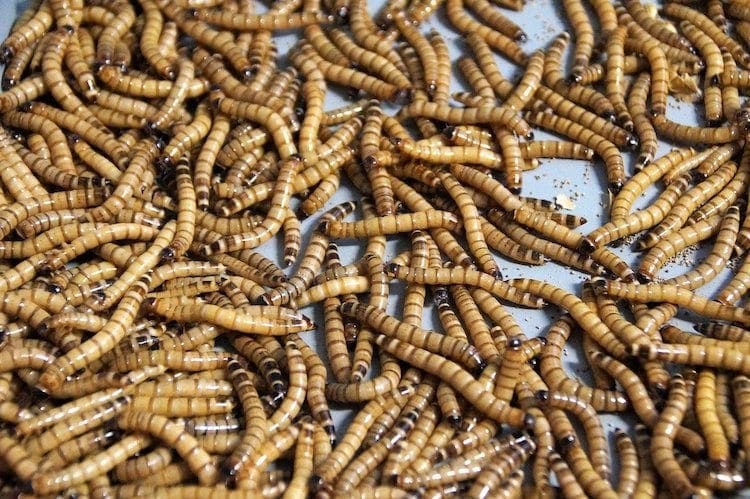
Water/ Liquid Requirements
A large water bowl is imperative for your frog. That’s usually where they hang out when they’re active in the wild. You should use a dechlorinator if any chlorine is in your drinking water. Also, clean the bowl daily using hot water to disinfect it.
Size & Growth Rate
The Amazon Milk Frog gets between 3–5 inches. Females are the larger of the two sexes. They can reach adult size around 8–10 months. An experienced handler can sex the frogs at that point. Of course, a healthy diet is essential for the frog to reach its full size.
Varieties
No other varieties are known to exist, although Osteocephalus taurinus looks similar but lacks the green coloration on the Amazon Milk Frog’s back.
Lifespan and Health Conditions
The Amazon Milk Frog is relatively long-lived in the wild. Without predators, pets may live up to 25 years in the right conditions. The species is an excellent beginner frog. However, the correct setup is vital to its health and longevity. Regular cleaning is also necessary to prevent infectious diseases. The humid and warm conditions set up the perfect storm for bacteria.
- Bacterial infections
- Urolithiasis
- Hypovitaminosis A
- Metabolic bone disease
Male vs. Female
The main difference between the two sexes is size. Males can become territorial and harass females during breeding. Either sex will make a good pet. It’s worth noting that it’s inadvisable to handle frogs frequently because of harmful skin secretions. Therefore, the desirability of a male over a female is a moot point.

3 Little-Known Facts About the Amazon Milk Frog
1. The Amazon Milk Frog Changes Color When It Becomes an Adult
Juvenile frogs are black and white. The colors morph to dark brown, gray, and khaki-green as the animal reaches adulthood.
2. The South American People Have Their Own Name for This Frog
Local people call the Amazon Milk Frog “sapo canoeiro.” The phrase means “boatman.” It refers to the animal’s croaking that sounds like oars banging the sides of a canoe.
3. The Female Ensures the Species’ Survival With Large Clutches of Eggs
The female can produce up to 2,000 eggs in a clutch. It’s no wonder the species isn’t threatened in the wild!
Final Thoughts
The Amazon Milk Frog is a fascinating animal that has adapted to fill a unique niche. It lives in the canopy and only comes down to visit tree holes for water. It’s easy to breed, which made it a no-brainer to become a favorite among hobbyists. It boils down to providing and maintaining the right conditions that replicate its rainforest habitat.
Your decked-out aquarium offers an opportunity to recreate this special environment in your home. Some sphagnum moss, plants, driftwood, and a few hiding places will transport you and your frogs to Amazonia.
Featured Image Credit: bohacekmarek, Pixabay

